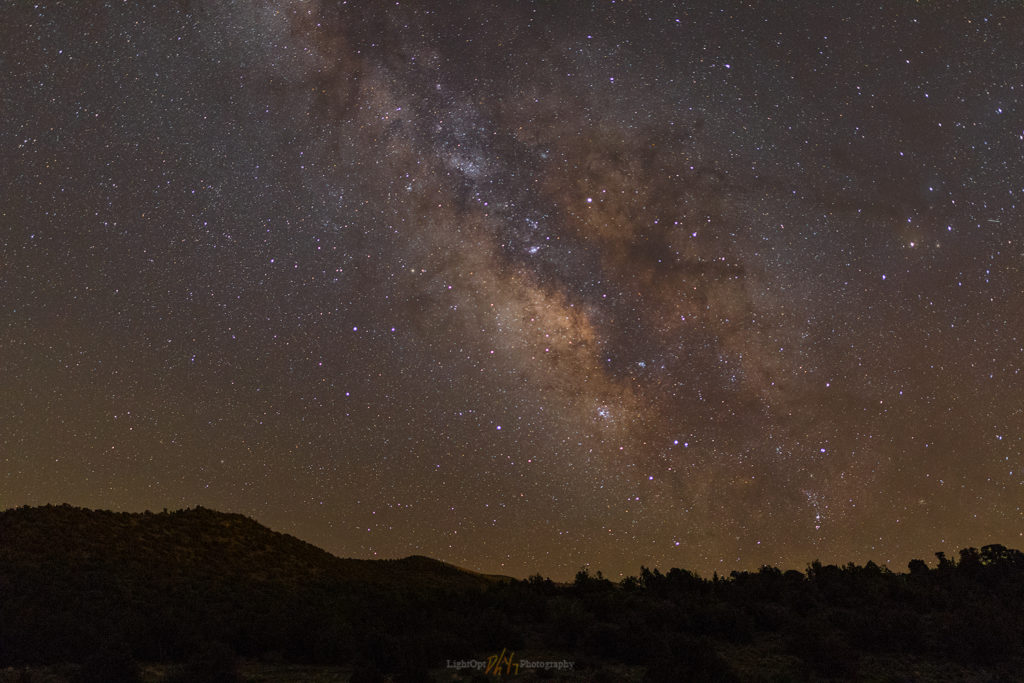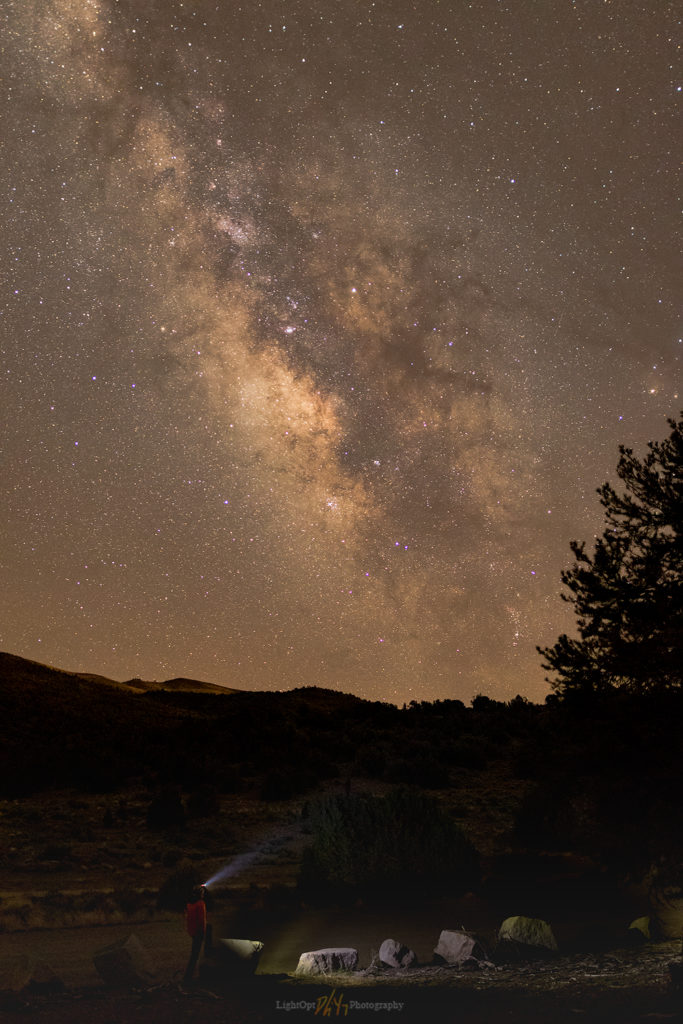I have long wanted to try photographing the Milky Way. I wasn’t too sure how it would turn out, but I liked the idea of getting out in the dark of the early morning and giving it a try. I’d messed around as a geeky teenager trying to photograph galaxies and nebulae by attaching my SLR to a Meade telescope. I still keep the 30-year-old mount adaptor, but I don’t remember any of the images turning out as we anxiously reviewed negative strips we got back from our local photo developer. I can still locate most of the common dark-sky objects, but this morning I just wanted a picture of the Milky Way; and, I’d heard that DSLRs made it pretty easy to capture one.

With this in mind, I decided to start at 3 AM and head over to the Pinyon Trailhead. I could see the Milky Way easily enough. The moon had set long ago and the sun was a couple hours away. I’d prepared by investing in a 20mm, f/1.4 lens, having reviewed several tutorials about astrophotography. I wanted wide-angle and a fast, light-grabbing lens. At the trailhead, I set up my tripod, pointed my 80D at the Milky Way, cranked up the ISO, and hit shutter for a 10-second exposure. Wow, that’s cool. A bright, well-defined Milky Way and its receding core appeared on the LCD screen. It was beautiful, and nothing like what I could see with my unaided eye. I experimented with various exposure times and ISOs until settling on 15 seconds and an ISO of 3200.
Working the RAW files in Lightroom, I tried to create the relatively clear images of the stars and dust of our galaxy. Although I was amazed at the outcome, I will need plenty of practice to get images that capture the feeling of a dark night and the deep sky. It takes imagination and creativity because you can’t see and experience the image like you can when you capture a landscape, even when you process nature scenes to communicate the feeling and experience of a place and its light.
Keep going.

Leave a Reply